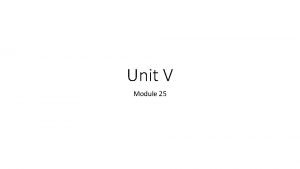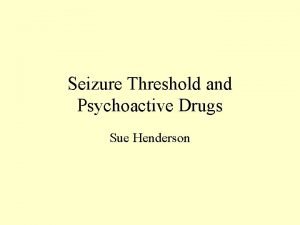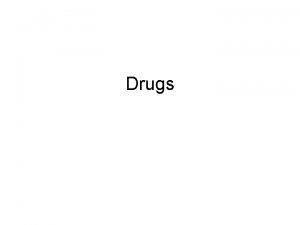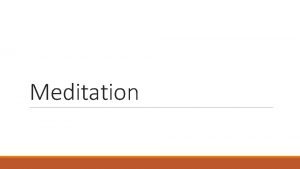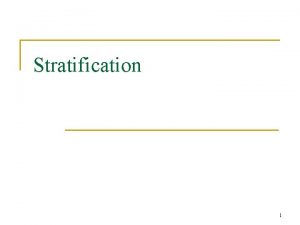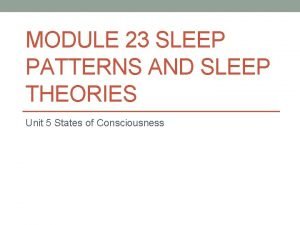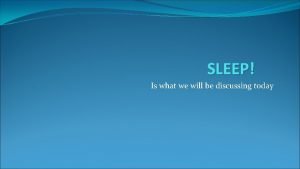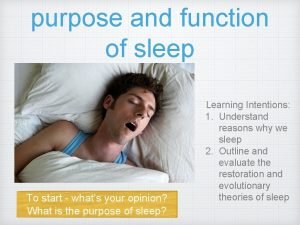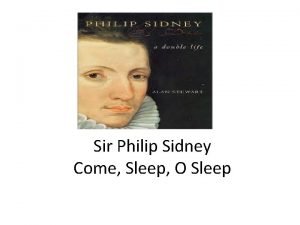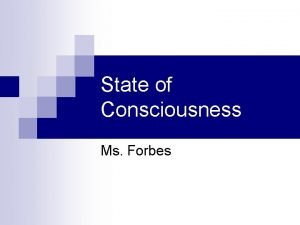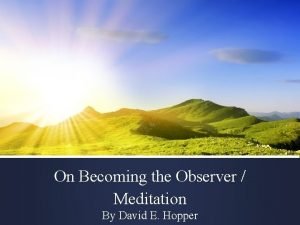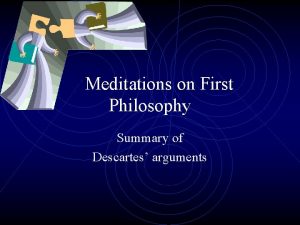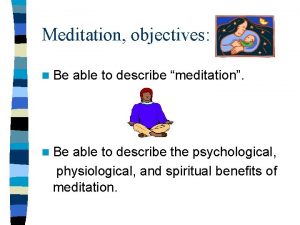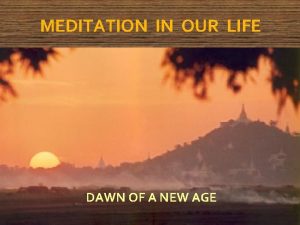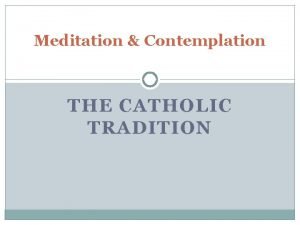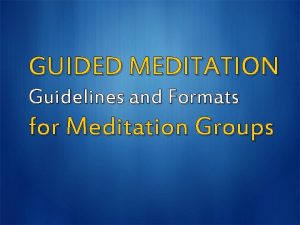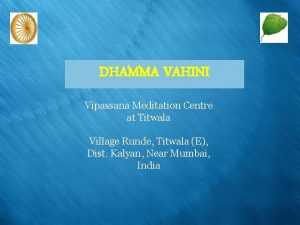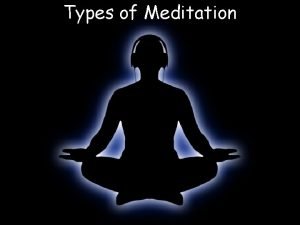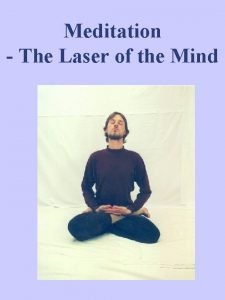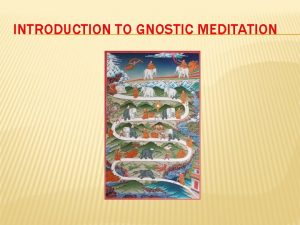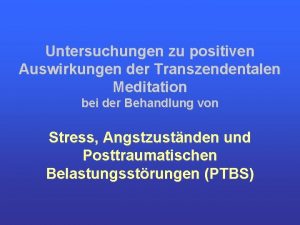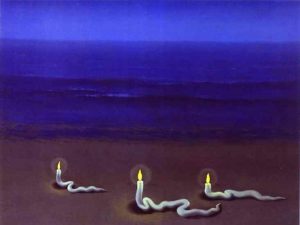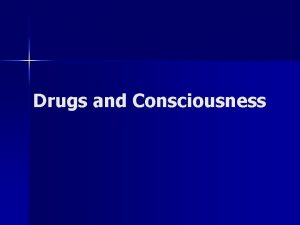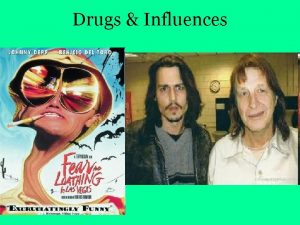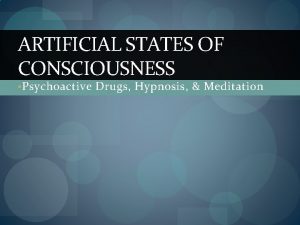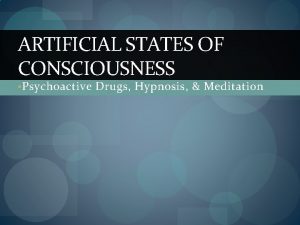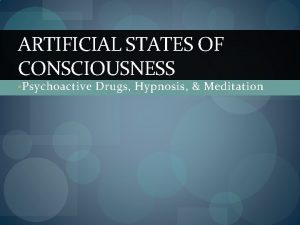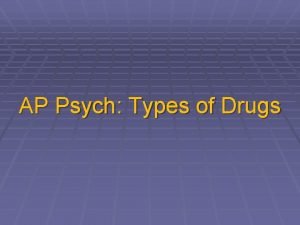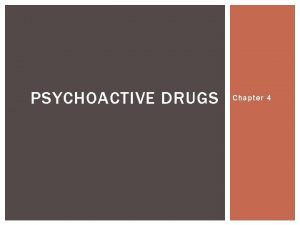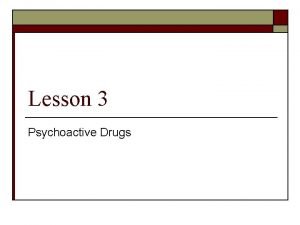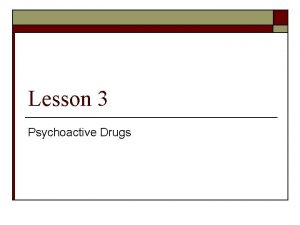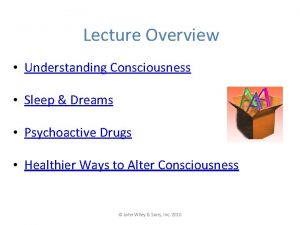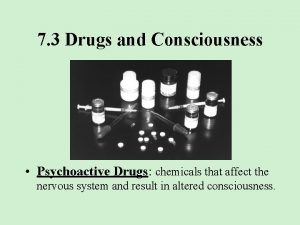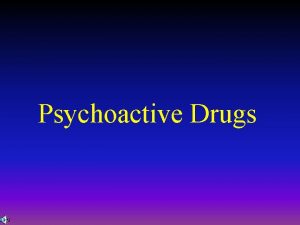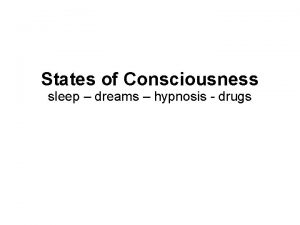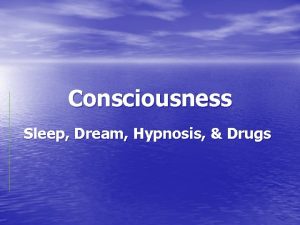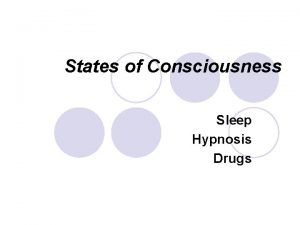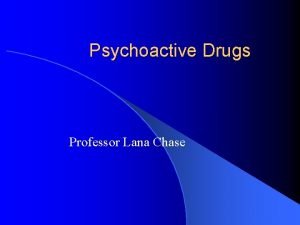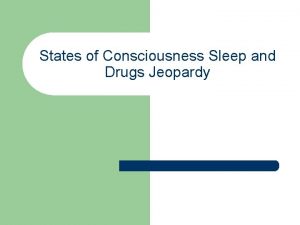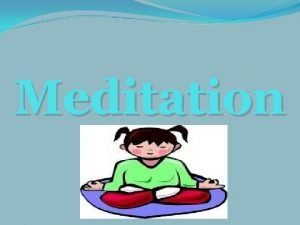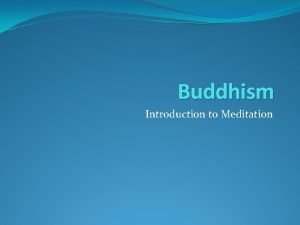Consciousness sleep and dreaming Psychoactive drugs Meditation and























- Slides: 23

• Consciousness, sleep, and dreaming • Psychoactive drugs • Meditation and hypnosis © 2014 John Wiley & Sons, Inc. All rights reserved.

Things You’ll Learn in Chapter 5 Q 1 Can getting too little sleep increase your risk of getting a cold? Q 2 Can using a computer or i. Pad late at night make it harder to fall asleep? Q 3 Are you addicted to Facebook? Q 4 Can using marijuana decrease your IQ? Q 5 Can hypnosis decrease the pain of childbirth? © 2014 John Wiley & Sons, Inc. All rights reserved.

CONSCIOUSNESS, SLEEP, AND DREAMING © 2014 John Wiley & Sons, Inc. All rights reserved.

What Is Consciousness? • Consciousness = awareness of internal events and of the external environment • Remember selective attention (Chapter 4)? – Controlling consciousness through deliberate concentration and full concentration • Alternate state of consciousness = any mental state different from ordinary waking consciousness – Sleep, dreaming, psychoactive drug use, hypnosis © 2014 John Wiley & Sons, Inc. All rights reserved.

• Divided attention: texting and driving © 2014 John Wiley & Sons, Inc. All rights reserved.

Circadian Rhythms • 24 -hour biological clock • Changes in alertness, body temperature, moods, blood pressure, pulse, and others • Peak in the middle of the day; low point at night • SCN (suprachiasmatic nucleus) perceives darkness, signals pineal gland to release melatonin © 2014 John Wiley & Sons, Inc. All rights reserved.

Sleep challenges for teenagers • Teens experience a natural shift in the timing of circadian rhythms during puberty (Carskadon et al. , 1998) • Delay in release of melatonin: released around 10 pm in adults, but not until 1 am in teens! What might this mean for schools? • Delaying start of high school by 30 mins leads to improvements in mood, alertness, health (Owens et al. , 2010) and decreases in car accidents among teen drivers (Danner & Phillips, 2008)© 2014 John Wiley & Sons, Inc. All rights reserved.

Sleep Deprivation • 1 in ____ adults are so sleepy during the day that it interferes with daily activities • _______ % of all drivers have fallen asleep a few seconds at the wheel (microsleep) Are YOU sleep deprived? © 2014 John Wiley & Sons, Inc. All rights reserved.

Q 1 Can getting too little sleep increase your risk of getting a cold? Reduced cognitive and motor performance Irritability and mood alterations Decreased self-esteem Impaired immune system = People sleeping <7 hours/night are 3 x more likely to catch a cold than those who sleep 8+ hrs • Greater risk of obesity because sleep deprivation interferes with appetite-controlling hormone • • © 2014 John Wiley & Sons, Inc. All rights reserved.

Stages of Sleep • 90 -minute pattern • Dreams during REM sleep © 2014 John Wiley & Sons, Inc. All rights reserved.

Why Do We Sleep? Four Sleep Theories 1. Adaptation/protection theory: conserve energy and protect from predators 2. Repair/restoration theory: recuperate from daily activities 3. Growth/development theory: more sleep during stages of brain growth 4. Learning/memory theory: more REM sleep during stages of greatest learning © 2014 John Wiley & Sons, Inc. All rights reserved.

Why Do We Dream? Three Dream Theories 1. Wish-fulfillment = unacceptable desires are normally repressed, but emerge in dreams – – Manifest content = story line of the dream Latent content = what the dream represents 2. Activation-synthesis hypothesis = dreams are the brain’s way of making sense of random electrical stimulation occurring during REM 3. Cognitive view = dreams organize and interpret information from waking experience into memories © 2014 John Wiley & Sons, Inc. All rights reserved.

Sleep-Wake Disorders © 2014 John Wiley & Sons, Inc. All rights reserved.

Q 2 Can using a computer or i. Pad late at night make it harder to fall asleep? • Exposure to light from electronic displays (i. Pad or computer) reduces melatonin by 22% • Nonprescription sleep aids don’t work; prescription tranquilizers and barbiturates help people sleep, but decrease Stage 4 and REM sleep and can create dependence • Some research shows small doses of melatonin help people fall asleep and stay asleep © 2014 John Wiley & Sons, Inc. All rights reserved.

Improve your sleep: During the Day • Natural sleep aids: • Exercise • Regular sleep/wake hours • Avoid stimulants • Avoid late meals and heavy drinking • Stop worrying • Use presleep rituals • Practice yoga In Bed • Use progressive relaxation • Use fantasies of self in tranquil setting • Use deep breathing • Warm bath © 2014 John Wiley & Sons, Inc. All rights reserved.

Psychoactive Drugs • Agonist drugs = enhance a particular neurotransmitter • Antagonist drugs = inhibit a neurotransmitter • Drug abuse = drug taking that causes emotional or physical harm to self or others • Addiction = body requires drug to function; the outcome of tolerance and dependence – – Psychological dependence Physical dependence Withdrawal Tolerance © 2014 John Wiley & Sons, Inc. All rights reserved.

Q 3 Are you addicted to Facebook? • Feel unreasonably compelled to check FB? • “Do you feel an urge to use FB more and more? ” • “Do you become restless or troubled if prohibited from using FB? ” © 2014 John Wiley & Sons, Inc. All rights reserved.

Four Drug Categories © 2014 John Wiley & Sons, Inc. All rights reserved.

Four Drug Categories © 2014 John Wiley & Sons, Inc. All rights reserved.

Q 4 Can using marijuana decrease your IQ? • Teenagers who started smoking marijuana before age 18 and were addicted to the drug by age 38 showed decreases in IQ • Drops of 8 points for heaviest users © 2014 John Wiley & Sons, Inc. All rights reserved.

Meditation and Hypnosis • Results of meditation range from mellow relaxation to strong hallucinations • Meditation leads to altered states of consciousness because of purposeful changes in prefrontal cortex • By focusing on single object, emotion or word, you diminish the number of brain cells that are devoted to multiple tasks; neurons that had been devoted to time now allow you to experience sense of timelessness and mild euphoria © 2014 John Wiley & Sons, Inc. All rights reserved.

Q 5 Can hypnosis decrease the pain of childbirth? • Hypnosis = trance-like state of heightened suggestibility, deep relaxation, focus • Medical areas that experience high levels of anxiety (dentistry, childbirth, etc. ) use hypnosis to create both lower levels and shorter duration of pain © 2014 John Wiley & Sons, Inc. All rights reserved.

© 2014 John Wiley & Sons, Inc. All rights reserved.
 Module 25 psychoactive drugs
Module 25 psychoactive drugs Seizure threshold definition
Seizure threshold definition Psychoactive drugs chart
Psychoactive drugs chart Christian meditation vs eastern meditation
Christian meditation vs eastern meditation Types of social mobility
Types of social mobility Module 23 sleep patterns and sleep theories
Module 23 sleep patterns and sleep theories Module 23 sleep patterns and sleep theories
Module 23 sleep patterns and sleep theories Module 23 sleep patterns and sleep theories
Module 23 sleep patterns and sleep theories Come sleep
Come sleep Adults spend about ______% of their sleep in rem sleep.
Adults spend about ______% of their sleep in rem sleep. The observer meditation
The observer meditation Rene descartes meditations on first philosophy summary
Rene descartes meditations on first philosophy summary Mindfulness objectives
Mindfulness objectives Samarpan meditation prarthana dham
Samarpan meditation prarthana dham Franciscan meditation
Franciscan meditation Psalms 119 meditation
Psalms 119 meditation Srf guided meditations
Srf guided meditations Vipassana kalyan
Vipassana kalyan Meditation examples
Meditation examples Meditation examples
Meditation examples What is mantra
What is mantra Gnostic meditation
Gnostic meditation Transzendentale meditation bluthochdruck
Transzendentale meditation bluthochdruck Meditation rene magritte
Meditation rene magritte
